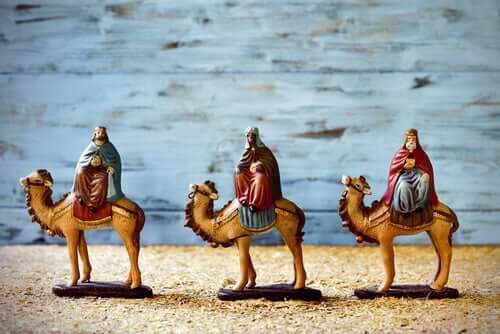The origin of the Three Kings may be unknown to many, despite being a deeply rooted tradition in various societies, in some countries the feast of the Kings is celebrated by a large number of families.
It is a tradition that has inspired several works of art since its inception, being a subject covered by different painters and sculptors throughout history.
- The most common legend that children know is that of three wise men who came from the East in search of a star to leave their gifts in the houses.
- The wise men.
- Rich kings with many treasures.
- Decide which children will give the gifts and what each one deserves.
- Because they received letters from these children informing their wishes.
- Feelings.
- Behavior during the year.
- Etc.
The Reis Magos Story fills the children with hope and magic at the end of the year, who on the night of the kings are eager for gifts and feed their fantasies and dreams, this expectation concerns not only children, but also adults, who nurture the legend of the kings among the little ones and participate in tradition.
However, what is the origin of the wizards?Where was this tradition born and how was it established in society?We’ll talk about the next topic.
The story of Reis Magos originates from Mateus Evangelista, who mentions magicians in his gospel without specifying specific names or data.
He says the wizards came from the East, guided by a star, in search of the Jerusalem-born “king of the Jews. “This star took them to Bethlehem, where they found Jesus and gave him gifts (gold, incense, and myrrh). .
It was in the 3rd century BC that it was established that there were three sages. Origin, writer and main driver of Christian theology, he was the first to propose that there were three magicians because of the three gifts offered to the child.
In the 6th century AD the current names of the three sages appear for the first time, by the hand of the historian Agnello in his book Pontificalis Ecclesiae Ravennatis, which distinguishes Melchor, Gaspar and Baltazar by their names and ages.
Over time, the three sages began to be represented with the three races considered major in the Middle Ages. Thus, King Baltazar represents the Africans, King Melchor represents the Europeans and King Gaspar corresponds to The Asians.
The word? It comes from Persian and means priest. Later, he came to Greek as “magoi”, referring to people who studied the stars in their desire to seek God. From Greek, he went to Latin as a magician, from where he came to the Portuguese “magician”.
From the nineteenth century AD, the tradition of the Three Wise Men in Spain began as a children’s feast for children in honor of the saint of the east of Sao Nicolau.
Following tradition, the night of kings was established, the night before the Epiphany, as the time the kings passed by to leave their gifts for the children in their homes.
In 1866 the first horseback riding of the Reis Magos was held in Alicante, the tradition spread throughout the country and then through other countries, especially those of Hispanic culture.
The history of the Magi, according to the Bible, dates back to the time of the birth of Jesus Christ.
Reis Magos has had a great weight in the history of art, as they have inspired countless artists, including the works of Sandro Botticelli, Leonardo da Vinci and El Bosco, who represent the setting for the Adoration of the Magi.
The legend of the Magi has also distinguished itself in architecture, in Spain it is possible to find the Romanesque eardrum in Ahedo de Butrón (Burgos) and the entrance to the church of Santo Domingo de Soria, where the cult of kings is represented.

